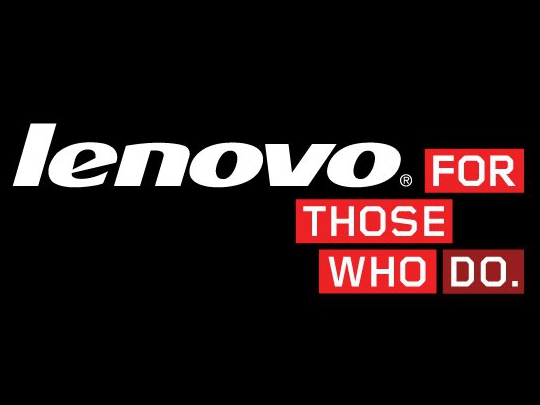Lenovo Intros EE3 Tech for Faster Boot Time
Starting April, Think and Idea-branded PCs will feature Enhanced Experience 3, promising a 24-second boot up process.
Late Wednesday night Lenovo announced the upcoming launch of its Enhanced Experience (EE3) Version 3 for Windows 7, promising a 24-second boot up time for its line of Lenovo Think and Idea-branded PCs. EE3 will become a standard feature on a wide range of Think and Idea-branded PCs that will ship to retailers beginning in April.
"Customers using traditional spinning disk hard drive (HDD) on Lenovo PCs can start their PC on average 40 percent faster than typical Windows 7 PC1 users, thanks to Lenovo’s RapidBoot technology, featured on all EE3 certified Lenovo PCs," the company said. "RapidBoot uses optimized processes and hardware settings to allow Lenovo PCs to boot up faster."
Lenovo said that its EE3 certified PCs boot up in 24 seconds on average, while the typical Windows 7 PC trails with an average time of 41 seconds. Customers will be able to tell if a Lenovo PC is EE3 equipped by looking for the special Lenovo Enhanced Experience 3 for Windows 7 certification sticker affixed to them. Lenovo’s upcoming IdeaPad U310 and U410 Ultrabooks and IdeaCentre A720 all-in-one desktop will be among the first EE3 products to hit the market.
So what exactly is EE3? It consists of two factors: RapidBoot and BootShield. The former tech features smart defragmentation which defragments the area of the hard disk drive that contains the boot files used to load Windows, and an HDD accelerator which uses the RAM as a cache for boot files.
"Hundreds of drivers have been reconfigured to improve performance," Lenovo said. "Proprietary BIOS development reduces BIOS post time. Non-essential Windows 7 services are delayed until after the boot process is complete. Preinstalled software (like antivirus) is compiled and imaged. And finally, we use only the highest quality for key components like graphics, hard drive, and memory, which drastically increases performance."
BootShield is only available on Lenovo's notebooks. It checks the availability of system resources during the boot process and selectively pauses the launch of additional software until resources are freed up or until the user manually launches the specific program. This will be a huge help later on as the device gets older and the user piles on even more software which can decrease system performance and boot times.
"Time is precious, and when it comes to your PC, we want to make sure that every second counts, and reduce the wait time it takes to get your PC up and running," said Mark Cohen, distinguished engineer and vice president, Lenovo. "The EE3 optimizations we’ve made on our consumer and business PCs mean customers will spend less time waiting and more time doing what they want to do, with faster boot time performance and quicker resume times for a more instant-on experience."
Get Tom's Hardware's best news and in-depth reviews, straight to your inbox.
As stated, look for the special Lenovo Enhanced Experience 3 for Windows 7 certification sticker affixed to new Think and Idea-branded PCs starting in April.

Kevin Parrish has over a decade of experience as a writer, editor, and product tester. His work focused on computer hardware, networking equipment, smartphones, tablets, gaming consoles, and other internet-connected devices. His work has appeared in Tom's Hardware, Tom's Guide, Maximum PC, Digital Trends, Android Authority, How-To Geek, Lifewire, and others.
-
aicom Boot defragmentation has been around since XP. Windows 7 does wait to start many system services (called delay start services) and Windows 8 is even more aggressive in delaying non-critical services. Windows 8 also takes the RAM cache trick even further with its hybrid boot feature (http://blogs.msdn.com/b/b8/archive/2011/09/08/delivering-fast-boot-times-in-windows-8.aspx). Not a lot there after that stuff.Reply -
freggo Everyone with even a bit of computer knowledge knows that is is a good idea to have 2 drives. One for system and programs, one for data...Reply
How long until main stream companies offers their systems with a SSD/HDD combination ?
-
cmartin011 to bad couldn't make a operating system on chip. like push a button and its on and then push a button its off all the setting are set back to default and ur files are stored on a separate chip, sorta like BIOS chip for and operating systemReply -
spiketheaardvark Faster drives are great but I swear bios post times are getting worse not better. I have a dell laptop that takes longer to post than my old 266mhz machine did 15 years ago. It takes almost as long to post as is does to boot windows. Microsoft has been working hard to speed things up but the motherboard folks need to shape up.Reply -
aicom spiketheaardvarkFaster drives are great but I swear bios post times are getting worse not better. I have a dell laptop that takes longer to post than my old 266mhz machine did 15 years ago. It takes almost as long to post as is does to boot windows. Microsoft has been working hard to speed things up but the motherboard folks need to shape up.+1. I have a Sandy Bridge build with an M4 that takes longer to POST than boot to the login screen of Windows 7.Reply -
dreadlokz I don't have an SSD and my 1 month testing Win 7 HomePremium installed in my old machine, only the HDs is new, a sata III connected to a sata II port boots in 30s!Reply
